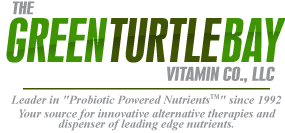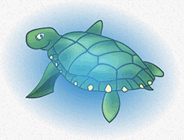Cystic Breasts
|
The following is excerpted with permission from a book written by Dr. Richard Podell, M.D. This information has been helpful to thousands of people in the past, but is not meant to replace your physician. Be sure to check with your physician before undergoing any change in diet. ©1993 The Podell Medical Center, all rights reserved. May not be reproduced in any form without prior written permission. (see Podell Medical Center)
It may be difficult to appreciate how much it means to a woman with painful cystic breasts to finally see her problem resolved. Nutritional treatments are far from perfect, but they surely can help many women who suffer from fibrocystic breast disease. This is a condition in which women develop multiple, recurring cysts of various sizes in their breasts . These give the breast a nodular consistency. Breast swelling, pain and tenderness may also occur, especially in the week or two before the period. (See also Premenstrual Syndrome.) Fibrocystic breast disease affects 20-40% of menstruating women. Breast cancer risk is mildly increased but much less so than by other risk factors such as a positive family history. However, whether or not there is a pattern of cysts, any new or enlarging cyst that does not shrink once the period begins must be considered a cancer suspect until proven otherwise.
Probably Effective: Low fat, vegetarian-style diet Avoid caffeine, chocolate and the asthma medicine theophylline
Low fat, vegetarian-style diet: A diet high in saturated animal fat stimulates the growth of breast tissue. Avoid caffeine, chocolate and the asthma medicine theophylline as they stimulate breast tissue growth. Many physicians believe, and many women testify, that eliminating caffeine was followed after a few months by major improvement. However as of this writing, there have not been controlled studies which conclusively prove this.
Probably Effective: Aqueous (diatomic) Iodide See details Waiting for F.D.A. approval; may be available through compounding pharmacies. Potassium or Sodium Iodide (Probably not as effective as diatomic iodide) Evening Primrose Oil (Borage Oil is an alternative) 500 mg of GLA source of GLA Possibly Effective: Vitamin A 15,000 units (Avoid if could be pregnant) Vitamin E 400 to 1000 (Be cautious about long term units use in doses over 400 units)
Potassium or Sodium Iodide: Several studies report symptom improvement in women treated with different forms of iodide. These can be obtained by prescription through most pharmacies. Caution: over-dose of iodide can disrupt thyroid function. Primrose Oil: This source of GLA, gamma-linolenic acid, was found to be effective for improving breast pain in at least two controlled studies and one uncontrolled study after 3-6 months of treatment. It was not effective at reducing the formation of new breast cysts or decreasing the amount of fibrous breast tissue. Vitamin A: In one study 10 of 12 women with breast pain improved following supplementation with 150,000 IU daily of vitamin A. No double blind studies have been done. Note: such very high doses of vitamin A are potentially highly toxic. Vitamin E: A few controlled studies appear to show benefit from 600 I.U. daily of vitamin E over 2-3 months. However, another controlled study found vitamin E no better than a placebo. Recommendations:
This information has been helpful to thousands of people in the past, but is not meant to replace your physician. Be sure to check with your physician before undergoing any change in diet. We recommend taking Primrose Oile and the anti-oxidants PowerVites, PowerMate.
|




